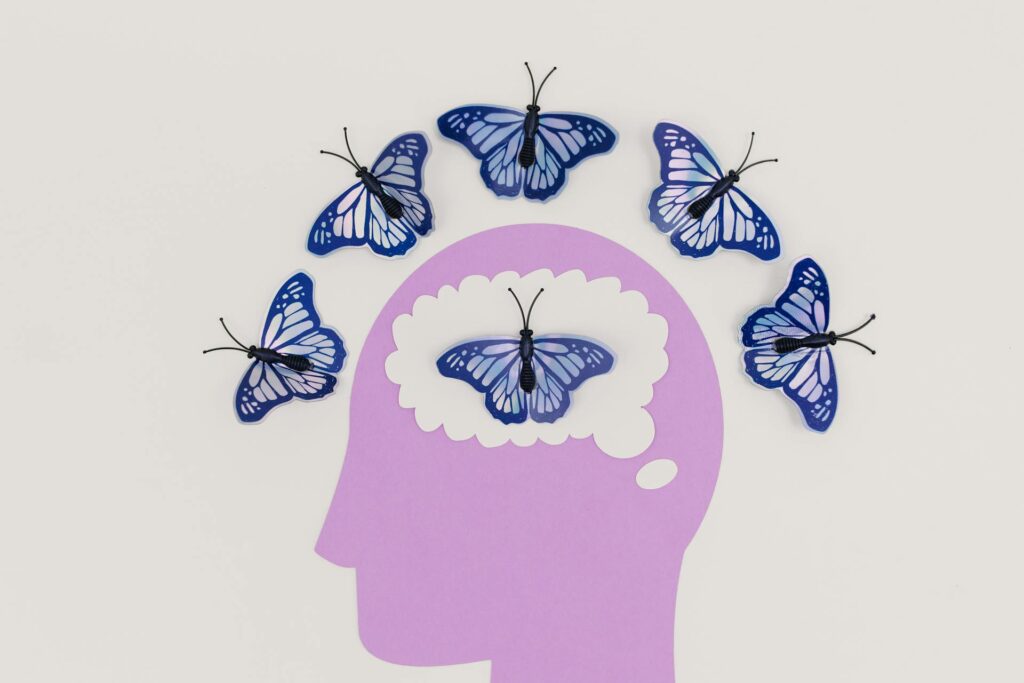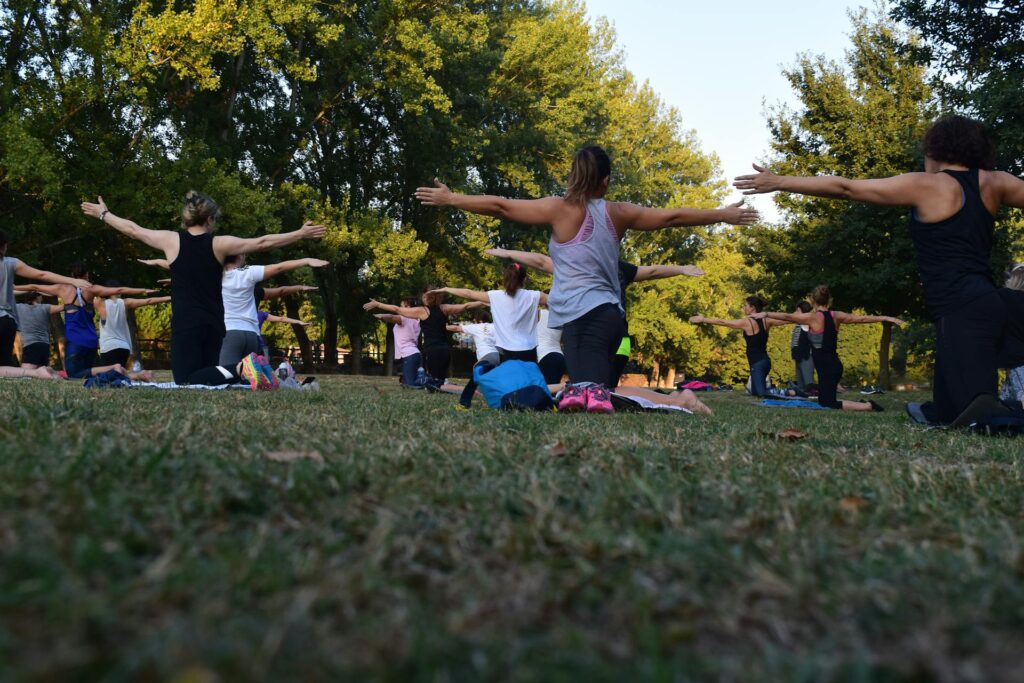Caring for our brains as we age is a big focus in both health and personal well-being. For a long time, we thought mental decline was just part of getting older. But research has flipped that idea on its head.
Turns out, the brain is way more adaptable than we realized. This adaptability is what we now call “cognitive reserve.” It’s become a key piece in the puzzle of slowing down or even preventing mental decline and dementia.
We’ll break down what cognitive reserve is, how it works throughout our lives, and what we can do to build it.
Contents
Understanding Cognitive Reserve: From Brain “Hardware” to “Software”

Cognitive reserve refers to the brain’s ability to handle damage, whether from aging or neurodegenerative diseases, without showing obvious signs of dysfunction. It helps explain why two people with similar brain damage might have very different outcomes.
Over time, the way we think about this has evolved. There are a few models that help explain what’s going on, and they focus on different aspects of the brain.
The first model, the Brain Reserve Model, is based on the idea that bigger brains or more neurons give you a higher tolerance for damage. Think of it like the brain’s “hardware”. If you’ve got more capacity, you can take more damage before it shows. But this model is now seen as incomplete because it makes brain health seem like a fixed, unchangeable thing.
Next is the Brain Maintenance Model, which suggests that living healthily can slow down the aging process of the brain. So, keeping your brain’s physical structure intact, through things like exercise and a good diet, can delay the visible effects of aging.
The most influential model today is the Cognitive Reserve Model. This one goes beyond the physical structure of the brain and focuses on how efficiently the brain works. It’s about how the brain adapts to challenges, finding new ways to work around damage or age-related decline.
It’s not about the size of the brain but how well it uses its resources. The beauty of this model is that it shows how life experiences, like education, social engagement, and mental challenges, can build and strengthen your cognitive reserve.
Cognitive Reserve is a Lifelong Project

One key takeaway from modern neuroscience is that cognitive reserve is not something you’re born with, and it doesn’t get set in stone by your 20s. You can build it, maintain it, and even increase it throughout your life with the right experiences. Studies show that learning new things, even at older ages, can physically change the brain.
For example, using memory techniques like the method of loci (where you visualize information in specific locations) can actually change how your brain works, making it more flexible.
Research also links education to brain health. People with more years of schooling tend to have more grey matter (the brain tissue involved in thinking and memory) and show more efficient brain activity during tasks.
How to Build Cognitive Reserve: Keep It New, Keep It Challenging

The best way to build cognitive reserve is through activities that are complex, new, and mentally demanding. These activities force your brain to break free of routine patterns, which strengthens your neural networks. This is the essence of neuroplasticity, the brain’s ability to change itself in response to learning.
Examples of such activities include learning to play an instrument, playing strategy games like chess, or taking on volunteer roles that require problem-solving and planning. These activities are better than passive ones because they engage multiple brain areas at once, keeping your brain sharp.
Learning a new language is particularly powerful. Not only does it strengthen the parts of the brain related to language, but it also boosts overall brain flexibility.
Bilingual people often experience a delayed onset of neurodegenerative diseases like dementia, and their brains show measurable physical changes, like increased grey matter and better white matter integrity, which helps the brain communicate faster.
Playing a musical instrument is another brain booster. It demands a lot of different cognitive skills, from fine motor control to memory and attention. Regular practice builds strong neural networks that improve cognitive control, your ability to focus, organize thoughts, and control impulses.
Some research, like the ENGAGE study, is even looking into combining structured cognitive training with fun activities, like learning a second language or playing music. These “natural” learning methods have shown similar benefits to more traditional, repetitive cognitive exercises.
So, the future of brain health might lie in interventions that are both effective and enjoyable, keeping us engaged in the long run.
Why Physical Activity is Non-Negotiable for Brain Health

While keeping your mind engaged is key to building cognitive reserve, physical activity is the bedrock of maintaining the brain’s health. The impact of exercise on the brain is immediate and significant.
How Exercise Strengthens the Brain
Exercise kicks off a series of biological processes that directly benefit the brain. One of the first effects is increased blood flow to the brain, which delivers more oxygen and nutrients to brain cells, supporting their health. This is especially important for the hippocampus, the region responsible for learning and memory, which is directly stimulated by physical activity.
The most powerful way exercise works on the brain is through the release of neurotrophic factors, proteins that help grow new neurons, strengthen neuron connections, and keep brain cells healthy.
The most famous of these is Brain-Derived Neurotrophic Factor (BDNF), often called “fertilizer for the brain.” It’s critical for neurogenesis (creating new neurons) and synaptic plasticity (strengthening neuron connections).
Exercise also boosts other growth factors like IGF-1 and VEGF, which help repair neurons and form new blood vessels in the brain.
Exercise also has a huge impact on mood. Physical activity triggers the release of endorphins and serotonin, improving mood, while lowering cortisol, a stress hormone that, in high levels, can damage the brain over time.
By keeping cortisol in check and improving mood, exercise helps create an environment in the brain that’s optimal for learning and memory.
Also See: Your Brain is Hiding the Reality from You, And That’s Exactly What Keeps You Alive
How to Make Exercise Work for Your Brain

To get the most out of exercise for brain health, it’s important to consider what kind of activity you’re doing, how long you’re doing it, and how often.
Studies show that even just two to three 45-minute sessions of aerobic exercise a week can improve memory, mood, and focus. Activities like brisk walking, cycling, swimming, or dancing are great choices.
What’s impressive is that these benefits can show up in just a few weeks, highlighting how quickly the brain responds to movement.
For maximum benefits, aim for about 4 to 5 hours of aerobic exercise each week. That could mean 45-minute sessions on five or six days.
This amount of activity is linked to improvements in the hippocampus (key for memory) and the prefrontal cortex (responsible for decision-making and planning). The CDC recommends at least 150 minutes of moderate-intensity exercise a week, which aligns with these findings.
While aerobic exercise is essential, don’t forget about strength training. Lifting weights or doing resistance exercises also promotes neuroprotective factors and has been shown to improve memory, even in people with early signs of cognitive decline.
A particularly effective approach is dual-task training, combining physical exercise with cognitive challenges (like walking while doing mental math). Research shows this type of training can double cognitive improvements compared to either exercise or mental training alone.
Strong Legs Mean a Stronger Brain

A newer idea in neuroscience is the “Legs-Brain Axis,” which links the health of your leg muscles directly to the health of your brain. Essentially, weak legs can speed up cognitive decline.
This connection has a clear biological basis, highlighting the importance of the muscles in your legs, which are the largest in your body. When you use these muscles, through walking, cycling, squats, or other exercises, they release beneficial chemicals, called myokines, into the bloodstream.
These myokines, including BDNF and Cathepsin B, cross the blood-brain barrier and promote brain health by stimulating neurogenesis and enhancing memory function in the hippocampus.
On the flip side, a lack of physical activity leads to sarcopenia, the loss of muscle mass that starts happening in your 40s. As muscles weaken, the release of myokines drops, and this can leave brain cells more vulnerable to damage. This muscle loss is linked to shrinkage in the brain, especially in areas related to memory and decision-making.
So, moving your body is one of the best defenses against cognitive decline.
Nutritional Neuroscience for Optimal Cognitive Aging

What we eat plays a major role in brain health. Nutrition gives the brain the building blocks it needs to function properly and protect itself.
While general healthy eating is important, a growing field of nutritional neuroscience has pinpointed specific foods and dietary patterns that help prevent age-related cognitive decline.
A diet focused on anti-inflammatory and antioxidant-rich foods can help protect the brain from the damage that leads to cognitive impairment.
Check out: Future-Proof Your Knees: Here’s What the Experts Say to Stay Active Without Pain for Decades
The MIND Diet
The MIND diet (Mediterranean-DASH Intervention for Neurodegenerative Delay) is one of the most researched and effective dietary patterns for brain health.
It combines elements of the Mediterranean diet, which is known for its heart health benefits, with the DASH (Dietary Approaches to Stop Hypertension) diet, which helps reduce high blood pressure.
While both diets are good for your heart (a major factor in brain health), the MIND diet was designed specifically to target brain protection.
The main goal of the MIND diet is to reduce two key factors that contribute to brain aging: inflammation and oxidative stress. Oxidative stress happens when there’s an imbalance between harmful free radicals and the body’s ability to fight them off with antioxidants.
Chronic low-level inflammation also harms brain function and is linked to neurodegenerative diseases. The foods in the MIND diet are rich in antioxidants, vitamins, and other compounds that help reduce both of these issues.
The evidence for the MIND diet is compelling. Studies show that people who stick to it may reduce their risk of developing Alzheimer’s by up to 53%. Even moderate adherence to the diet is associated with slower cognitive decline as we age, showing that brain health can be influenced by our daily food choices.
Breaking Down the MIND Diet: 10 Foods to Embrace, 5 to Limit

The MIND diet offers simple, clear guidelines on which foods to include and which to avoid. It focuses on 10 brain-boosting food groups and recommends limiting 5 food types that can damage brain health.
Foods to Embrace:
Green Leafy Vegetables: Eat at least 6 servings per week. They’re rich in nutrients like vitamin K, lutein, and folate, which reduce inflammation and oxidative stress.
Other Vegetables: Aim for 1+ serving per day. They provide a variety of vitamins and antioxidants that support brain health.
Nuts: 5+ servings per week. Packed with vitamin E, healthy fats, and antioxidants, nuts protect against cell damage.
Berries: 2+ servings per week. High in flavonoids, antioxidants that improve memory and protect neurons.
Beans: 4+ meals per week. They’re full of fiber, protein, and B vitamins, all essential for neurotransmitter function.
Whole Grains: 3+ servings per day. They provide steady brain energy and are rich in fiber and B vitamins.
Fish: 1+ meal per week. Rich in omega-3 fatty acids (especially DHA), which support brain cell structure and fight inflammation.
Poultry: 2+ meals per week. A lean source of protein to replace red and processed meats.
Olive Oil: Use as your primary cooking oil. It’s a healthy fat rich in antioxidants like vitamin E and helps reduce inflammation.
Foods to Limit:
Red Meat: Limit to less than 4 servings per week. It’s high in saturated fat, which promotes inflammation and cardiovascular disease.
Butter & Margarine: Less than 1 tablespoon per day. These are high in unhealthy fats that damage blood vessels, including those in the brain.
Cheese: Less than 1 serving per week. Often high in saturated fat, which is harmful to both vascular and brain health.
Pastries & Sweets: Less than 5 servings per week. These foods are high in sugar and refined carbs, which promote inflammation.
Fried & Fast Food: Less than 1 serving per week. Often full of trans fats, they contribute to inflammation and damage blood vessels.
Related: I Avoid These 5 Foods and My Body Feels 30 Years Younger, Says a Harvard Genetics Professor
The Hidden Dangers of Processed Foods

While we know to limit certain food groups, some specific ingredients in processed foods deserve extra attention, especially artificial sweeteners.
These sugar substitutes, like aspartame and sucralose, are often marketed as healthier alternatives to sugar, but research suggests they might have hidden dangers for the brain.
One large study followed over 12,000 adults for eight years and found a link between high consumption of artificial sweeteners and accelerated cognitive decline.
The cognitive difference observed was equivalent to about 1.6 years of extra brain aging, with the effect being stronger in people under 60 and those with diabetes.
So, what’s going on here? A lot of it seems to be related to the gut-brain axis. Some artificial sweeteners have been shown to mess with the balance of bacteria in your gut, leading to an imbalance that promotes inflammation throughout the body, including the brain.
This gut disruption can even allow toxins to cross the blood-brain barrier, which causes further brain inflammation. Other possible mechanisms include negative effects on glucose metabolism and insulin sensitivity, even without added calories.
This research highlights how important it is to focus on whole, unprocessed foods and be cautious about what’s in the products we eat. Even ingredients that seem healthy, like artificial sweeteners, might have unintended consequences for long-term brain health.
The Social Brain: Why Connection is a Cognitive Imperative

Humans are inherently social, and our brains are wired to thrive on connection. Strong social ties are one of the most powerful safeguards against cognitive decline, while isolation can have a lasting negative impact on brain health.
The Neurological Cost of Isolation
Social isolation and loneliness are not just emotional experiences; they have real, measurable effects on the brain.
Studies consistently show that being socially isolated is a major predictor of cognitive decline, dementia, depression, and anxiety. In fact, one large study found that people who experience social isolation are 26% more likely to develop dementia.
But why does isolation have such a profound effect? The biological reasons are becoming clearer. Loneliness is linked to chronic inflammation, higher blood pressure, and elevated stress hormones, factors that directly harm the brain.
In some cases, social isolation has even been shown to cause physical shrinkage in brain regions that are crucial for memory and cognition.
Moreover, the relationship between mental health and social connection can be a vicious cycle. Depression and anxiety can cause social withdrawal, which deepens the sense of isolation, worsening the symptoms of mental health disorders.
Social Engagement as a Cognitive Buffer

On the flip side, staying socially engaged offers significant protection against the cognitive challenges of aging. This protective effect comes from two main benefits: direct cognitive stimulation and indirect stress reduction.
Consider a simple conversation. While it may seem like an easy, everyday activity, it actually involves complex cognitive processes. It requires working memory to follow the flow of the conversation, long-term memory to recall past experiences, attention to stay focused, language processing to understand and respond, and executive functions to interpret social cues and regulate your responses.
In this way, social interaction functions like a natural form of brain training, keeping neural networks engaged and sharp.
A study from Penn State University found that older adults who had more frequent and positive social interactions on a given day performed significantly better on cognitive tests, not only that day but for the next two days as well.
Strong social ties also help buffer the brain against stress. Chronic stress leads to inflammation, which damages brain cells, but research shows that having strong social support can protect the brain from these harmful effects.
When people feel supported and connected, they experience less stress, leading to lower cortisol levels and less neuroinflammation. This, in turn, helps maintain cognitive function over time.
Actionable Framework for Building Social Capital

Building and maintaining social connections doesn’t have to be difficult. Here are some practical strategies to boost social engagement:
Joining Community Groups: Local community centers, senior centers, or hobby clubs (like book clubs or art classes) offer structured opportunities to meet new people and engage in meaningful activities. This is a great way to find like-minded individuals and share experiences.
Volunteering: Giving time to a cause that resonates with you, whether it’s at a charity, hospital, or school, helps create a sense of purpose while also fostering social connections with others who share your values.
Lifelong Learning: Take up a new class or hobby, like learning a language, cooking, or playing an instrument. Not only does this stimulate the brain, but it also creates an environment of shared learning, giving you a chance to meet people with similar interests.
Utilizing Technology: For people with mobility issues or those who live far from loved ones, technology is an excellent way to stay connected. Video calls, social media, and online communities help bridge the gap and maintain meaningful relationships, even from a distance.
Engaging in Group Fitness: Group fitness classes (like those at the YMCA or community gyms) combine the benefits of physical exercise with social interaction. This not only supports physical health but also promotes bonding and friendships.
By seeking out these opportunities and making social engagement a priority, individuals can build the social capital necessary for a healthy, resilient brain.
Also Read: This Common Habit Is Shrinking Your Brain, No Matter How Much You Exercise!
A Lifespan Approach to a Resilient Brain
It is never too early or too late to invest in brain health. Cognitive reserve is not a finite resource; rather, it is a capacity that can be built, expanded, and maintained throughout the lifespan.
The brain’s remarkable plasticity means that positive changes in lifestyle, such as learning new skills, engaging in physical activity, improving nutrition, and strengthening social connections, can be initiated at any age, with benefits that compound over time.
Importantly, cognitive decline is not an inevitable consequence of aging. A lifestyle that incorporates continuous learning, regular exercise, neuroprotective nutrition, and meaningful social connections is the most effective way to build and sustain a sharper and more resilient mind for years to come.